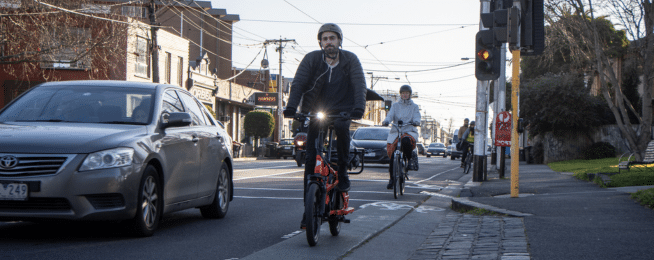The development of automated vehicle technologies that recognise the presence of vulnerable road users and take evasive action, independent of the driver, will help create a road environment that puts bike riders and pedestrians at less risk of collision with fast-moving traffic.
And it's making its way into vehicles sold in Australia.
Bicycle detection, autonomous emergency braking (AEB), speed management and external protection (bonnet activation) have been fitted to European cars for some years.
The speed of vehicles is closely correlated with the severity of injury to riders and pedestrians struck by the front of cars, and any technology to reduce the force of impact, or eliminate it completely, should be welcomed by anyone who rides a bike in traffic.
Now, for the first time, a study into these protective technologies has reported back – and the answers are reassuring.
Researchers used information collected by the Swedish Traffic Data Acquisition System to asses crashes between vehicles and bike riders/pedestrians and linked it with the matching medical information.
And by using the Swedish system for assessing injury severity they were able to allocate a severity score for each injury crash.
For vehicles with AEB colliding with bikes, the risk of severe injury was reduced by 35%, and for pedestrians 45%.
The better result for pedestrians is speculated to be that bicyclists are traveling faster, which gives the AEB system (and also the drivers) less time for detection and braking before impact.
Note that this is for collision speeds of 50 km/h or less.
For bike and pedestrian detection technology (without AEB) the results were also good with cars with highly rated detection systems reducing injury severity by 73% at low speeds (≤ 30 km/h) and 36% across all speed limits.
Active bonnet technology also reduced severity by 24%, but because riders in this category had high rates of helmet use, researchers assessed that the benefit may have been due to the helmets rather than the technology.
Also included in the study was an investigation into the effectiveness of traffic-calmed crossings, with the finding that features such as raised pedestrian crossings also reduced severity of injury to riders by 32%.
The overall benefit of a road safety system that includes all of these interventions would be substantial.
The study concludes: "A road environment with adapted infrastructure and speed, combined with passenger car technologies that improve the safety for vulnerable road users, can create high and synergetic reductions of serious injuries among pedestrians and bicyclists.”
Or become our friend and subscribe to receive our fortnightly newsletter.


